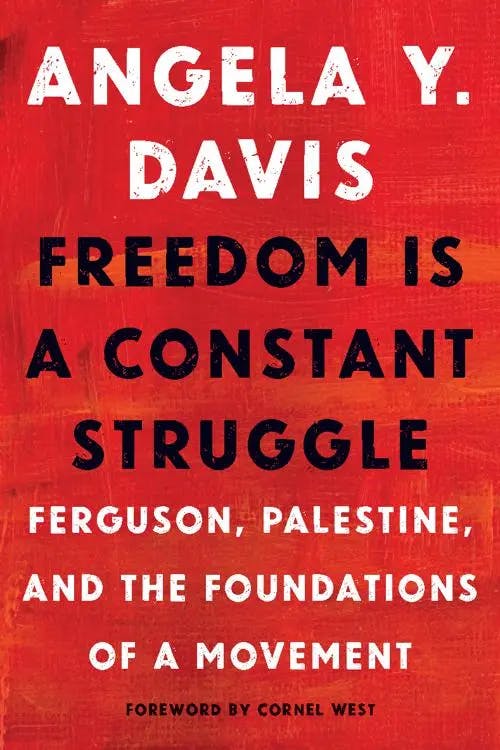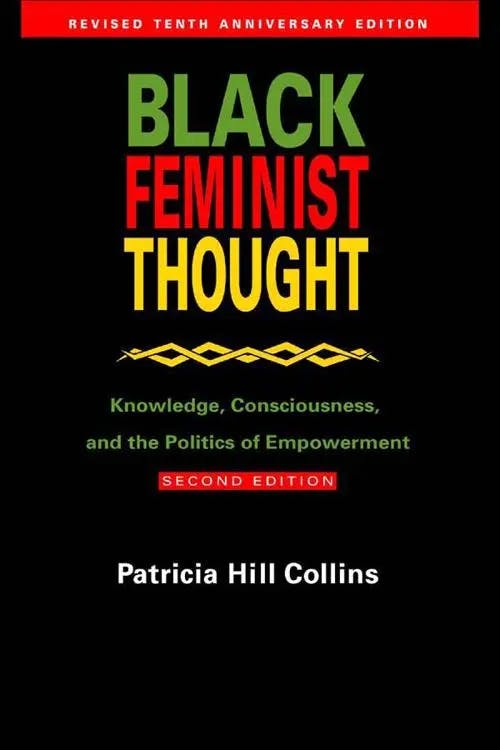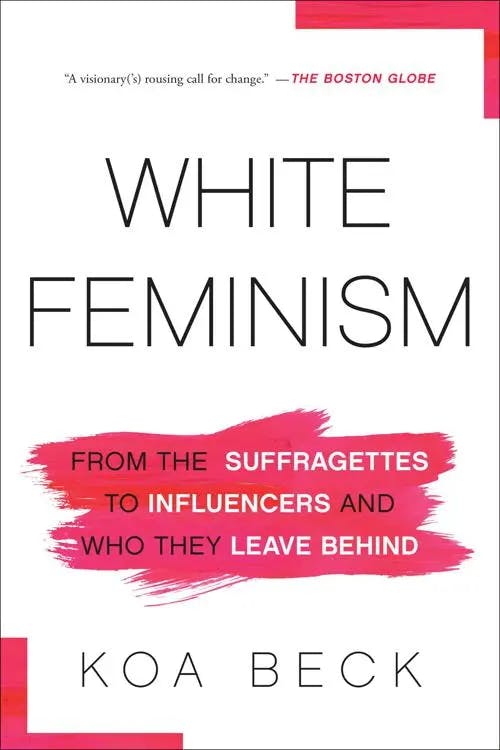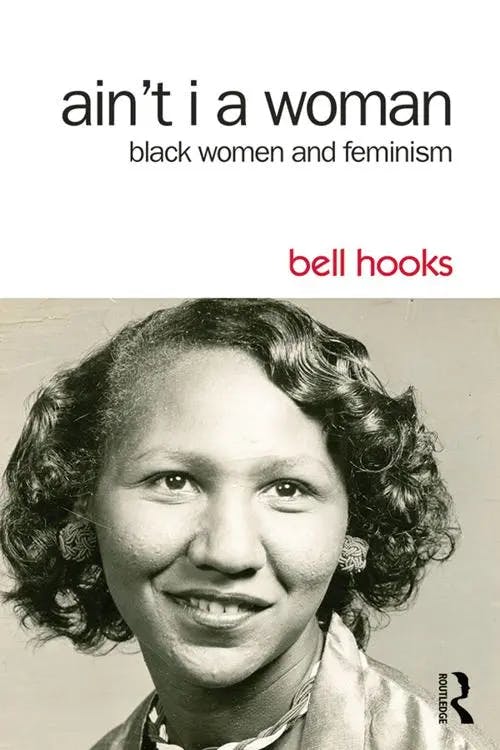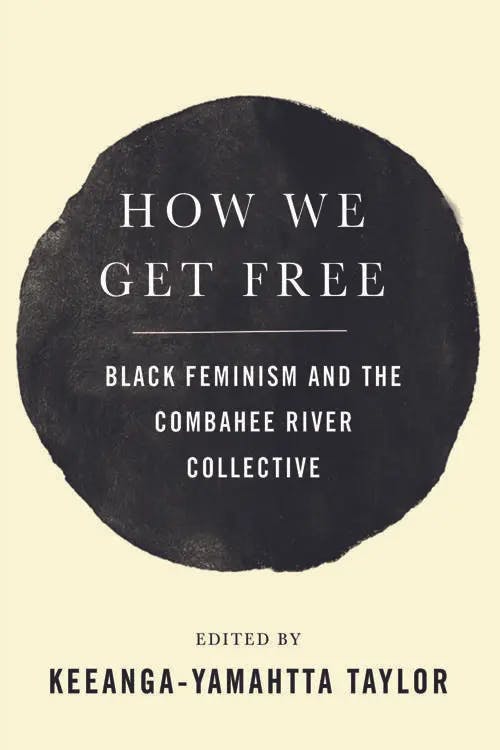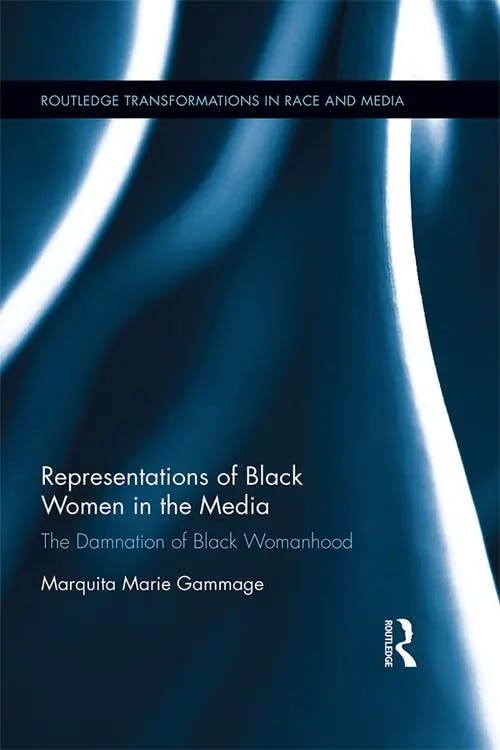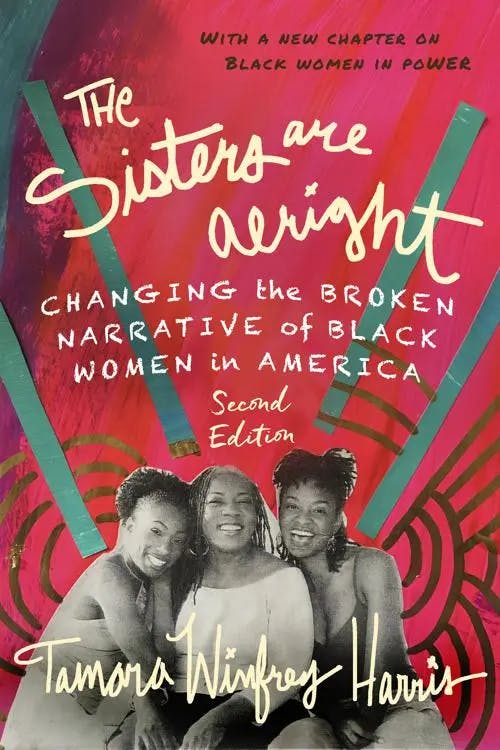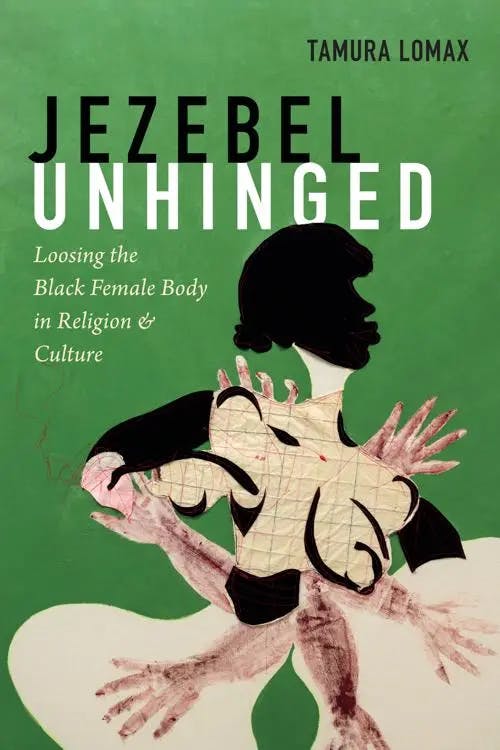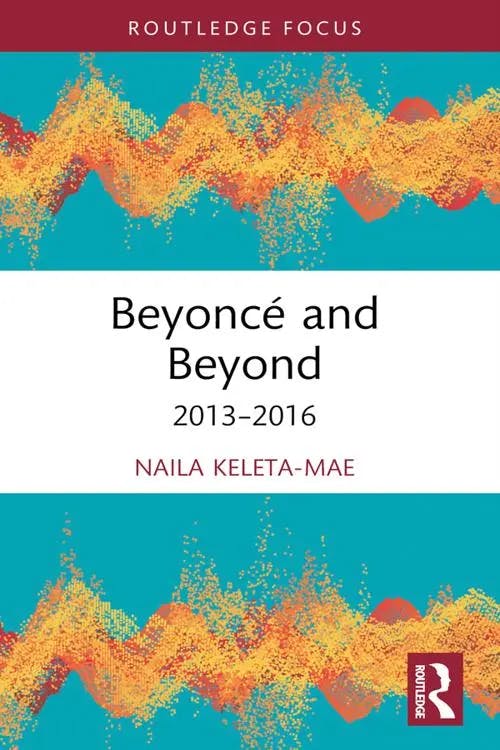What is Black Feminism?
PhD, English Literature (Lancaster University)
Date Published: 28.03.2023,
Last Updated: 19.07.2024
Share this article
Defining black feminism
Black feminism centers the experiences of Black women, acknowledging how they are impacted by the double bind of sexism and racism. As prominent activist and writer Angela Y. Davis explains,
Black feminism emerged as a theoretical and practical effort demonstrating that race, gender, and class are inseparable in the social worlds we inhabit. (2016)
Angela Y. Davis
Black feminism emerged as a theoretical and practical effort demonstrating that race, gender, and class are inseparable in the social worlds we inhabit. (2016)
Davis highlights how Black feminists were frequently asked which took priority: the Black rights movement or the women’s rights movement. Those who asked this had missed the point. Black feminism does not prioritize one identity over another but instead explores how racism and sexism are connected.
In Black Feminist Thought (2002), Patricia Hill Collins summarizes the three interdependent dimensions which keep Black women in a state of oppression.
Economic: Black women have experienced “long-standing ghettoization in service occupations” and their labor is necessary for the US capitalist economy.
Political: This type of oppression has “denied African-American women the rights and privileges routinely extended to White male citizens.”
Ideological: Harmful and controlling images of Black women, originating during the slave era, still proliferate.
Hill Collins goes on to write,
Taken together, the supposedly seamless web of economy, polity, and ideology function as a highly effective system of social control designed to keep African-American women in an assigned, subordinate place. (2002)
Patricia Hill Collins
Taken together, the supposedly seamless web of economy, polity, and ideology function as a highly effective system of social control designed to keep African-American women in an assigned, subordinate place. (2002)
It is this seamless web that Black feminism attempts to untangle as feminist scholars unpack how Black women’s overlapping identities have created multiple disadvantages.
Black suffrage
The women’s suffrage movement largely excluded Black women under the assumption that the additional civil rights campaign would make getting the vote for women more challenging. Though many early white activists were abolitionists, such as Elizabeth Cady Stanton, they believed that white women should be given the vote before Black men. Two distinct, separate suffrage movements formed, one for Black men and another for white women, with discussions of Black women removed from the conversation entirely (see Tetrault, The Myth of Seneca Falls, 2014).
The exclusion of Black women from the suffrage campaign can be seen in the segregation of the Washington Woman Suffrage Procession (1913). Black suffragettes from Howard University wrote to organizer Alice Paul to request they be able to attend the march. They were met with silence. Suffragettes like Mary Church Terrell, president of the National Association of Colored Women and writer Adelle Hunt Logan, encouraged the women from Howard to attend. Paul made the last-minute decision to segregate the march, commenting that, “we must have a white procession, or a Negro procession, or no procession at all” (cited in Beck, 2021).
As Koa Beck points out in White Feminism, many early women’s rights activists were abolitionists; however,
as white feminism would increasingly demonstrate, there is a marked difference between thinking Black Americans should be free and believing they should have equal opportunities to white people. (2021)
Koa Beck
as white feminism would increasingly demonstrate, there is a marked difference between thinking Black Americans should be free and believing they should have equal opportunities to white people. (2021)
Racial equality and gender equality were viewed by many white suffragettes as two separate problems, and any attempt to incorporate the former into the latter would be met with more hostility, reducing the likeliness of women securing the vote.
bell hooks states that,
Black women were placed in a double bind; to support women’s suffrage would imply that they were allying themselves with white women activists who had publicly revealed their racism, but to support only black male suffrage was to endorse a patriarchal social order that would grant them no political voice. The more radical black women activists demanded that black men and all women be given the vote. (Ain’t I a Woman?, 1981, [2014])
Moreover, in addition to being excluded by white women, Black women were further ostracized from the Black rights movement which set about establishing, according to hooks, a “black male patriarchy” (1981, [2014]). As hooks explains,
Black women had been asked to fade into the background — to allow the spotlight to shine solely on black men. That the black woman was victimized by sexist and racist oppression was seen as insignificant, for woman’s suffering however great could not take precedence over male pain. (1981, [2014])
bell hooks
Black women had been asked to fade into the background — to allow the spotlight to shine solely on black men. That the black woman was victimized by sexist and racist oppression was seen as insignificant, for woman’s suffering however great could not take precedence over male pain. (1981, [2014])
Suffragist Anna Julia Cooper also emphasized that securing the vote for Black women was essential as the issues and experiences of Black women were not the same as Black men’s.
Insufficiently supported by white women and Black men, Black feminists needed to speak out for their own rights.. At the Woman’s Rights Convention in 1851, Sojourner Truth, a Black woman who had been held in slavery, delivered her famous speech “Ain’t I a Woman?” in which she advocated for rights for all women.
Different organizations were formed to help Black women campaign for the vote: the Colored Women’s League (1892) and the National Association of Colored Women (NACW) (1896). The NACW, formed under the leadership of Mary Church Terrell and Josephine St. Pierre Ruffin, also addressed issues that impacted Black men as well as women, such as the Jim Crow laws.
Black suffragists like Nannie Helen Burroughs argued that Black women and white women needed to cooperate in order to secure the vote. Burroughs also argued that Black women have much to contribute to society. She writes,
When the ballot is put into the hands of the American woman the world is going to get a correct estimate of the Negro woman. It will find her a tower of strength of which poets have never sung, orators have never spoken, and scholars have never written. (Burroughs, “Black Women and Reform,” 1915)
Burroughs also set up the National Training School for Women and Girls in 1909 and advocated for greater civil rights for African American women, particularly in relation to their education which she argued would give Black women more job opportunities than had previously been open to them.
In the US, Black men and women were given voting rights in 1870 and 1920, respectively. However, Black citizens were effectively banned from voting until The Voting Rights Act (1965) as various strategies kept Black voters from the polls, including poll taxes, literary tests, and grandfather clauses (this clause meant that a person was exempt from voting restrictions such as passing a literacy test, if their grandfather had been able to vote — this meant that this restriction was applied to the descendants of former slaves). These legal and economic hurdles were compounded by the threats of violence Black people faced when attempting to cast their vote.
Despite universal suffrage today, there are many barriers that Black women still face, hence the continued need for Black feminism.
The Combahee River Collective and intersectionality
The Combahee River Collective (1974–1980) was one of the most influential Black feminist organizations of all time; it was created by Black feminist, socialist lesbians as a way to create a space to address multiple forms of oppression experienced simultaneously by Black women. The group was named in reference to the campaign led by Harriet Tubman who freed 750 slaves near the Combahee River in 1863. The Collective was active in supporting women in the community, founding a women’s refuge, and playing a prominent role in the campaign for reproductive rights.
In their statement in 1977, the Collective expressed that,
Above all else, our politics initially sprang from the shared belief that Black women are inherently valuable, that our liberation is a necessity not as an adjunct to somebody else’s but because of our need as human persons for autonomy.
(cited in How We Get Free, 2017)
Keeanga-Yamahtta Taylor
Above all else, our politics initially sprang from the shared belief that Black women are inherently valuable, that our liberation is a necessity not as an adjunct to somebody else’s but because of our need as human persons for autonomy.
(cited in How We Get Free, 2017)
The group promoted inclusivity and was interested in the interwoven systems of oppression based on sexism, racism, and classism. The statement articulated the difficulty in separating gender-based oppression from racism as the two are often “experienced simultaneously” (1977, [2017]).
The ideals of the Collective helped lay the groundwork for an intersectional approach to feminism. Kimberlé Crenshaw coined the term “intersectionality” in 1989. Crenshaw explains that,
Intersectionality is a metaphor for understanding the ways that multiple forms of inequality or disadvantage sometimes compound themselves and create obstacles that often are not understood among conventional ways of thinking. (“Demarginalizing the Intersection of Race and Sex,” 1989)
Crenshaw highlights that feminism must “explicitly oppose racism” or “both interests lose” (1989).
Though Crenshaw was the first to explicitly refer to intersectionality, Black feminists had long been advocating for an intersectional approach to women’s rights. Writer and feminist Audre Lorde famously said,
I am not free while any woman is unfree, even when her shackles are very different from my own. (“The Uses of Anger”, 1977)
For more on this topic, see our study guide on intersectionality and intersectional feminism here.
Deconstructing stereotypes
Ariana Howard et al. explain that of the three dimensions of oppression Hill Collins discusses (political, economic, and ideological), the ideological dimension is the hardest for Black women to navigate. They write that these ideologies, often shown through stereotyping in media, are “discursive tools of oppression” which “serve as filters through which many Black women’s ways of knowing, being, and doing get misunderstood and even re-appropriated” (Howard et al., “The Black Women’s Gathering Place: reconceptualising a curriculum of place/space” in Black Women Theorizing Curriculum Studies in Colour and Curves, 2020).
One of the main challenges of Black feminism is dismantling the stereotypes of Black women that have rendered them “other” and been used to justify their unequal status in society. Hill Collins writes,
The allegedly emotional, passionate nature of Black women has long been used to justify Black women’s sexual exploitation [...] Denying Black women status as fully human subjects by treating us as the objectified Other within multiple binaries demonstrates the power that binary thinking, oppositional difference, and objectification wield within intersecting oppressions. (2002)
As Hill Collins identifies, those in power had the authority to define social values and “manipulate ideas about Black womanhood” through controlling images “designed to make racism, sexism, poverty, and other forms of social injustice appear to be natural, normal, and inevitable parts of everyday life” (2002).
As Marquita Marie Gammage writes in Representations of Black Women in the Media (2015),
Stereotypes of both Black men and women were constructed to reinforce the White supremacist power structure and to further maintain the idea that Africans, whether enslaved or free, were not equal to Whites and were not capable of coexisting in the same societal structures. (2015)
Marquita Marie Gammage
Stereotypes of both Black men and women were constructed to reinforce the White supremacist power structure and to further maintain the idea that Africans, whether enslaved or free, were not equal to Whites and were not capable of coexisting in the same societal structures. (2015)
The mammy, Sapphire (also known as the Angry Black Woman), and Jezebel tropes are all examples of the images constructed of Black women which persist into the modern day.
Prominent stereotypes
1.) The 'Mammy' stereotype
Mammy is typically a Black woman who works for a white household, usually as a maid or nanny. She is represented as maternal and loyal, with no real desires or agency of her own. One of the most famous examples of this figure in popular culture is ‘Mammy’ (Hattie McDaniel) in Gone with the Wind (Fleming, 1939). McDaniel’s character is a maid and former slave, doting upon the white family she works for.
The mammy figure dates back to slavery, as Miki McElya explains in Clinging to Mammy (2009),
This expression of paternalism, which included both the giving and the taking of care, affection, and responsibility, worked to obscure the brutal coercion of slavery. Drawing the mammy or manservant into the folds of white domesticity occluded his or her essential role in black family life and community as well as slavery’s devastation of so many black families.
Micki McElya
This expression of paternalism, which included both the giving and the taking of care, affection, and responsibility, worked to obscure the brutal coercion of slavery. Drawing the mammy or manservant into the folds of white domesticity occluded his or her essential role in black family life and community as well as slavery’s devastation of so many black families.
The notion that Black women were naturally inclined to heavy or burdensome labor, that they in fact desired it, “helped legitimize the economic exploitation of house slaves (and later the long relegation of Black women to service and domestic work)” (Winfrey Harris, The Sisters are Alright, 2021).
Tamara Winfrey Harris writes,
Of course, Mammy was always a fiction — a response to abolitionists’ depictions of brutality and the ill-treatment of enslaved women. Female house slaves were not happy to be in bondage. The very idea is absurd. But the stereotype was useful in abetting slave culture. Positioning Mammy’s girth and features as unattractive, particularly to White men, erased the routine rape of enslaved women. (2021)
Tamara Winfrey Harris
Of course, Mammy was always a fiction — a response to abolitionists’ depictions of brutality and the ill-treatment of enslaved women. Female house slaves were not happy to be in bondage. The very idea is absurd. But the stereotype was useful in abetting slave culture. Positioning Mammy’s girth and features as unattractive, particularly to White men, erased the routine rape of enslaved women. (2021)
The Mammy stereotype attempts to create an image of racial harmony post-slavery, by showing a Black woman appreciative of her subservient role within a white household. The agency is removed from the Black woman, whose needs and experiences are secondary to the white people she works for.
2.) The 'Sapphire' stereotype
Sapphire is a dominant Black woman who eschews subservience and appears, as a result, as “emasculating and repellent to men” (Winfrey Harris, 2021). The Sapphire figure is seen as “sassy” and aggressive, and she often tries to emasculate her husband. The name Sapphire comes from Ernestine Wade’s character on the sitcom The Amos ‘n’ Andy Show (1951–53). Wade’s character Sapphire would entertain audiences by antagonizing and lambasting her husband, George.
We often see examples in the media, particularly in reality television, of Black women seen as difficult and unreasonable or labeled “divas.”
The Sapphire stereotype is particularly harmful as it positions assertive Black women as overly emotional, diminishing their justified grievances.
3.) The 'Jezebel' stereotype
If white women were constructed as self-contained, chaste, and dignified, the image of the Black woman was to be the antithesis of this. The Jezebel trope was conceptualized as the “exotic other” whose promiscuity and allure was a threat to the homes of white families. “Jezebel” derives from the biblical figure whose name has become used to describe devious and shameless women.
The image of the Jezebel figure has a long-documented history in both the US and Britain. The trope is epitomized in the story of Saartjie Baartmen (also known as the Hottentot Venus), a South African Woman who was “exhibited” around England during the early Victorian period when she was nineteen. Crowds were invited to observe her buttocks, breasts, and genitalia. The commodification and objectification of Baartmen illustrates the way the Black female body was scrutinized, inspected, and ridiculed under colonial racism.
As Tamura A. Lomax writes in Jezebel Unhinged (2018),
Baartman and black venus, coiled together, became the object of European freakery, fascination, and scientific research concerning black female sexuality for centuries to come, shaping even colonization, North American slavery, ideas around innate black female promiscuity, and laws around black women and girls and rape.
Tamura Lomax
Baartman and black venus, coiled together, became the object of European freakery, fascination, and scientific research concerning black female sexuality for centuries to come, shaping even colonization, North American slavery, ideas around innate black female promiscuity, and laws around black women and girls and rape.
Denean Sharpley-Whiting posits in Black Venus,
Desire for knowledge, and thus mastery of blacks and women, led to the creation of racist-sexist ideologies, images (sexual savages and prostitutes), and institutions (slavery and motherhood) to produce and sustain the illusion of realism, of absolute truth, thereby effecting mastery of otherness. (1999)
The sexualization and fetishization of Black women continue today as highlighted in A Taste for Brown Sugar by Mireille Miller-Young (2014). Miller-Young writes,
In songs, films, music videos, and everyday life, the discourse of brown sugar references the supposed essence of black female sexuality. It exposes historical mythologies about the desirable yet deviant sexual nature of black women. Publicly scorned and privately enjoyed, the alluring, transformative, and supposedly perverse sexuality of black women is thoroughly cemented in the popular imaginary. (2014)
Black feminism draws attention to these harmful stereotypes, interrogating the cultural representation of Black women. Scholars in media and film studies identify how Black women on screen are not presented with the same degree of complexity as their white counterparts. This lack of fully developed Black women characters is perhaps due to the lack of Black creators behind the camera and in the writing room. Shows written and created by Black women about and for Black women have been critically acclaimed but unfortunately, tend not to receive huge platforms. For example, shows such as Ackee and Saltfish (Emeke and Thomas, 2016) and The Mis-Adventures of Awkward Black Girl (Rae, 2011) have amassed a huge following online, but have struggled to gain mainstream popularity.
Black feminism today
In the wake of the Black Lives Matter (BLM) movement, the oppression of Black women, particularly in the US, has shifted into focus. #SayHerName generated awareness for Black women who were disproportionately impacted by police brutality and anti-Black violence, such as Breonna Taylor who was killed by a police officer in March 2020. These acts of violence against the Black community have prompted dialogue about antiracism and the ways in which white people can acknowledge their own privilege and internal biases. However, there is still much that needs to be done to work towards true equality for Black women.
Winfrey Harris writes,
Things are better for Black women. Better should not be confused with good. Much of the racial education that took place in 2020, when folks hunkered down in their homes reading Robin DiAngelo’s White Fragility and Ibram X. Kendi’s How to Be an Anti-racist, did not consider the specific intersection of racism and sexism that affects Black women and girls. And while the internet may be able to force a public apology, it cannot force a changed mind. (2021)
Real change, Winfrey Harris points out, will be difficult to come by, as “centuries-old stereotypes die hard” (2021).
Keeanga-Yamahtta Taylor explains that the oppression of Black women can be seen in economic terms today as Black women make up the largest section of the poor (comprising 25% of this economic group compared to white women who make up 10%) (How We Get Free, 2017). These figures demonstrate how discussions of the oppression of Black women, as Taylor explains, are not about pandering to “political correctness” but are designed to validate and measure “exactly the levels of oppression, inequality, and exploitation experienced in African American communities” (2017).
While we have seen some strides in recent years to move away from stereotypes of Black women, new stereotypes have emerged — namely the “strong Black woman.” bell hooks explains that when the strength of Black women is spoken of, it is typically romanticized and does not differentiate between overcoming and enduring oppression. She writes,
The tendency to romanticize the black female experience that began in the feminist movement was reflected in the culture as a whole. The stereotypical image of the “strong” black woman was no longer seen as dehumanizing, it became the new badge of black female glory. (Ain’t I a Woman?, 1981, [2014])
Black women have sought to redefine themselves, often in relation or retaliation to typical anti-Black, sexist stereotyping. For example, in Beyoncé’s music video for “Hold Up,” the singer is shown smashing a car window with a bat, typifying the Sapphire or Angry Black Woman stereotype (Lemonade, 2016). The Lemonade album has been highly praised for its reclamation and unpacking of Black stereotypes. Naila Keleta-Mae writes in Beyonce and Beyond (2023), Lemonade is:
a meditation on Black female anger — an emotion that Black women in the United States have been socialized to contain ever since the advent of the transatlantic slave trade. (2023)
Naila Keleta-Mae
a meditation on Black female anger — an emotion that Black women in the United States have been socialized to contain ever since the advent of the transatlantic slave trade. (2023)
Black creators such as Beyoncé have done much to overturn racial and gender expectations, voicing how centuries-old stereotypes do not adequately represent the complexity of their lives.
It can be easy to presume that Black feminism is a relatively new field, a modern response to our twenty-first-century reappraisal of identity. However, it is important to remember that Black women have been a part of the feminist movement since the beginning, despite works such as Cady Stanton’s History of Woman Suffrage (1881–1922, [2019]) excluding the role Black feminists played in the suffrage campaign. Today, many argue that mainstream feminism continues to cater solely towards white (mainly affluent) women. Black feminism focuses on intersectionality and inclusivity, while still offering specific attention to the experiences of Black women.
Further black feminism reading on Perlego
Davis, A.Y., Dent, G., Meiners. E., and B Richie (2021). Abolition. Feminism. Now. Haymarket Books. Available at: https://www.perlego.com/book/1436879/abolition-feminism-now-pdf
Nash, J. C. (2018) Black Feminism Reimagined: After Intersectionality. Duke University Press. Available at: https://www.perlego.com/book/1466316/black-feminism-reimagined-after-intersectionality-pdf
St Jean, Y., and J. R. Feagin (2015). Double Burden: Black Women and Everyday Racism. Routledge. Available at: https://www.perlego.com/book/1558049/double-burden-black-women-and-everyday-racism-pdf
White, E. F. (2010) Dark Continent Of Our Bodies: Black Feminism & Politics Of Respectability. Temple University Press. Available at: https://www.perlego.com/book/2031066/dark-continent-of-our-bodies-black-feminism-politics-of-respectability-pdf
What is Black feminism in simple terms?
Who are the key Black feminist writers?
What is intersectionality?
Bibliography
Beck, K. (2021) White Feminism. Atria Books. Available at: https://www.perlego.com/book/2783338/white-feminism-from-the-suffragettes-to-influencers-and-who-they-leave-behind-pdf
Burroughs, N. H. (1915) "Black Women and Reform." The Crisis 10(4). Available at: https://awpc.cattcenter.iastate.edu/2019/09/27/black-women-and-reform/
Cady Stanton, E. (1881-1922 [2019]) History of Woman Suffrage. Youcanprint. Available at: https://www.perlego.com/book/3006107/history-of-woman-suffrage-volume-i-pdf
Crenshaw, K. (1989). “Demarginalizing the intersection of race and sex: A black feminist critique of antidiscrimination doctrine, feminist theory and antiracist politics”. University of Chicago Legal Forum, 139.
Davis, A. Y. (2016) Freedom Is a Constant Struggle: Ferguson, Palestine, and the Foundations of a Movement, ed. F. Barat. Haymarket Books. Available at. https://www.perlego.com/book/566536/freedom-is-a-constant-struggle-ferguson-palestine-and-the-foundations-of-a-movement-pdf
Denean Sharpley-Whiting, T. (1999) Black Venus: Sexualized Savages, Primal Fears, and Primitive Narratives in French. Duke University Press. Available at: https://www.perlego.com/book/1466963/black-venus-sexualized-savages-primal-fears-and-primitive-narratives-in-french-pdf
Harris Winfrey, T. (2021) The Sisters are Alright. Berrett-Koehler Publishers. Available at: https://www.perlego.com/book/2330645/the-sisters-are-alright-second-edition-changing-the-broken-narrative-of-black-women-in-america-pdf
Hill Collins, P. (2002) Black Feminist Thought. Routledge. Available at: https://www.perlego.com/book/1610042/black-feminist-thought-knowledge-consciousness-and-the-politics-of-empowerment-pdf
hooks, b. (1981 [2014]) Ain’t I a Woman? Routledge, Available at: https://www.perlego.com/book/1560536/aint-i-a-woman-black-women-and-feminism-pdf
Howard, A., Patterson, A., Kinlock, V., Burkhard, T., and R Randall. (2020) “The Black Women’s Gathering Place: reconceptualising a curriculum of place/space” in Black Women Theorizing Curriculum Studies in Colour and Curves, eds K. T. Edwards Williams, D. T. Baszile and N. A. Guillory. Routledge. Available at: https://www.perlego.com/book/1583911/black-women-theorizing-curriculum-studies-in-colour-and-curves-pdf
Keleta-Mae, N. (2023) Beyonce and Beyond: 2013-2016. Routledge. Available at: https://www.perlego.com/book/3837574/beyonc-and-beyond-20132016-pdf
Lomax, T. A. (2018) Jezebel Unhinged. Duke University Press. Available at: https://www.perlego.com/book/1466348/jezebel-unhinged-loosing-the-black-female-body-in-religion-and-culture-pdf
Lorde, A. (1977) “The Uses of Anger”. Women’s Studies Quarterly (25). Available at: https://www.jstor.org/stable/40005441
McElya, M. (2009) Clinging to Mammy. Harvard University Press. Available at: https://www.perlego.com/book/1147479/clinging-to-mammy-the-faithful-slave-in-twentiethcentury-america-the-faithful-slave-in-twentiethcentury-america-pdf
Miller-Young, M. (2014) A Taste for Brown Sugar. Duke University Press. Available at: https://www.perlego.com/book/1466749/a-taste-for-brown-sugar-black-women-in-pornography-pdf
Tetrault, L. (2014)The Myth of Seneca Falls: Memory and the Women's Suffrage Movement, 1848-1898. University of North Carolina Press. Available at: https://www.perlego.com/book/538629/the-myth-of-seneca-falls-memory-and-the-womens-suffrage-movement-18481898-pdf
PhD, English Literature (Lancaster University)
Sophie Raine has a PhD from Lancaster University. Her work focuses on penny dreadfuls and urban spaces. Her previous publications have been featured in VPFA (2019; 2022) and the Palgrave Handbook for Steam Age Gothic (2021) and her co-edited collection Penny Dreadfuls and the Gothic was released in 2023 with University of Wales Press.

